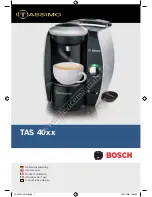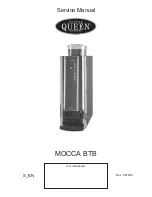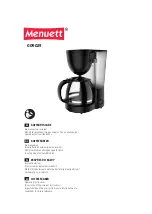
Solution:
1.
Adjust the hardness value.
2.
Follow the instruction provided together with ice cream mixture.
3.
Consult with your local distributor or contact Oceanpower if none is available.
4.
Never start distribution ice cream before the cooling cycle is finished and the
compressor and motor stops and the motors current drops down quickly to
zero.
5.
Control that the air tube is installed correctly and that there is enough of mix
in respective hopper.
NOTE: When machine is operated manually, then the motors current should never be
bellow 4.00 during distribution, otherwise the product will be to soft to be served.
5.1.7 Ice cream comes out behind the discharge door.
Cause:
1.
The O-ring behind the discharge door is placed incorrectly.
2.
The O-ring behind the discharge door is deformed.
Solution
1.
Replace the O-ring correctly and make sure that the bolts holding the
discharge door is well screw tight, according to the instructions in chapter
2.4.1.
2.
Change the O-ring to a new one.
5.1.8 Big amount of ice cream in the drip pan
Cause:
1.
The ripple seal ring is installed incorrectly
2.
The ripple-sealed ring is damaged.
Solution:
1.
Reinstall the ripple-sealed ring according to the instructions in chapter 2.4.1
2.
Change the ripple-sealed ring into a new one.
5.1.9 Mixture or ice cream leaks from the draw valves.
Cause:
1. The O-rings is installed incorrectly.
2. The O-rings are damaged.
Solution:
1. Reinstall the O-rings according to the instructions in chapter 4.4.
2. Change the O-ring into a new one.
5.1.10 The Ice cream mixture do not flow into the cooling cylinder
Cause:
1. The temperature of the mix is too low.
2. To little water was used when preparing the mix.
3. Old mix is used that has a different viscosity (usually to thick).
Solution
1. Do not let the mix become colder than 1-4ºC.
27
Summary of Contents for OPF138
Page 5: ...Chapter 1 General information 5...
Page 11: ...Chapter 2 INSTALLATION 11...
Page 15: ...Chapter 3 OPERATING INSTRUKTION 15...
Page 19: ...Chapter 4 CLEANING AND SANITIZING 19...
Page 24: ...Chapter 5 TROUBLESHOOTING GUIDE 24...
Page 28: ...2 Follow the mixing rate according to the manufacturer 3 Try to always use fresh mix 28...



































